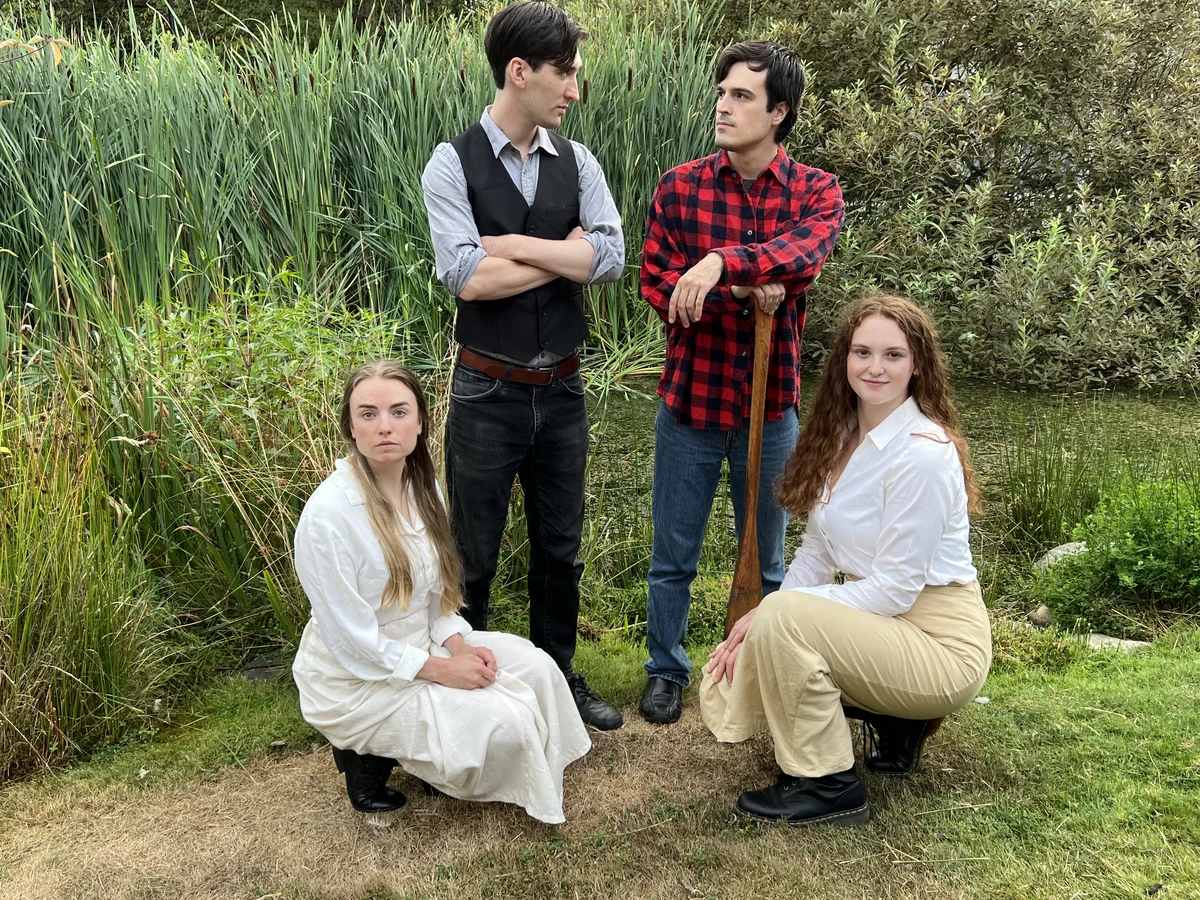
On July 16, 1917, the body of now-legendary Canadian painter Tom Thomson was found floating in the waters of Canoe Lake, Ontario. Coroners ruled that he died by accidental drowning, but some, including writer and director Gregory Strong, have their doubts.
In Strong’s one-act play, Tom Thomson is Missing, he imagines the artist’s final days.
Strong used a variety of sources in his research for the play, citing author Roy MacGregor, but very little information exists on the days leading up to the artist’s demise. Strong has taken it upon himself to present the story as he sees it, fictionalizing what elements are missing in order to fill in the gaps of this enduring Canadian mystery.
In a three-walled tent amid the decommissioned smokestacks of Granville Island, two silhouette prints of Thomson’s most famous works, “The West Wind” and “The Jack Pine”, hung behind the stage as three actors ominously chanted the artist’s name. Such a large cast is unconventional for (usually one person) Fringe Festival productions, and Strong has made full use of it with complex scenes involving multiple characters, most notably an impressively energetic party scene at Tom’s final gallery exhibition.
Once the action of the play began, the audience was thrust into a compelling dynamic in which Tom (Tristan Foy) was torn between his love for the solitude of nature and his obligations to his pregnant lover, Winnie (Lauren Crick). Foy and Crick played beautifully off of one another, especially in the lighter scenes where they teased and joked together. When the tension dialed up, however, Crick’s Winnie came off as slightly overboard, seemingly shaking with rage even at minor frustrations.
When Tom promised to collect a loan from his so-called friend Shannon (Dylan Araki), Winnie groaned at the name. It soon became clear why; this Shannon was a terror. From stealing and cheating, to wife-beating (Hayley Sullivan gave a wonderfully subtle performance as his suffering spouse), Shannon, a whiskey slamming frontier innkeeper, brutalized those around him every chance he got.
The heavy exaggeration of the antagonist left the audience wondering why a wallflower like Tom was ever friends with him to begin with. Araki and Foy did what they could to suggest a lapsed brotherhood, but even a single instance of camaraderie between the two would have gone a long way towards making their relationship more believable and its ill-fated end all the more heartbreaking.
When Shannon committed Tom’s body to the waters of Canoe l=Lake, the action brought with it a potent sense of inevitability. Strong took great care in setting up his protagonist’s love of the very land that would soon claim him through multiple moving scenes, creating a sense of Tom as one incapable of existing in his modern world, fleeing instead to the arms of nature.
“Maybe [Shannon] did him a favour,” mused Strong in an interview after the show. “Because of his mystery, now people think ‘Oh, he’s the guy who died young.’” Strong's dark comment contributes to a long tradition of morbid fascination with the ‘tragic genius’, which runs the risk of reducing artists to martyrdom at the cost of remembering their humanity.
The director’s tender treatment of his protagonist in the play, however, serves to remind the audience of the man behind the myth.
Whatever the circumstances of Tom Thomson’s death, the products of his life endure in his paintings and his legacy, and Tom Thomson is Missing serves as a loving and skilful tribute to both.

